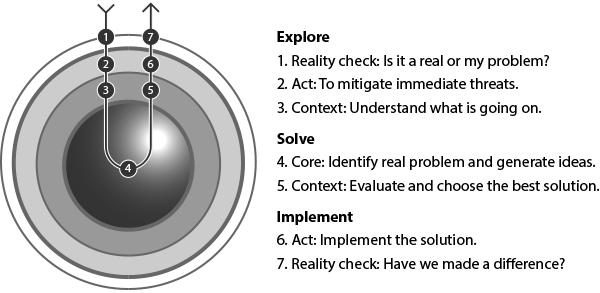
This is a follow-up of a previous post – Anatomy of a problem – outlining how we can visualise a problem as distinct layers comprising actions and insights.
When we take on a problem, we begin by digging through the layers to explore it (Steps 1 to 3) as we dig our way to the core. Along the way, we collect insights (about the context surrounding the problem) ready to build a clear concept of the problem.
In Step 4, we collate all the insights we have and turn those into a clear conceptualisation of the problem. When we are able to articulate a problem thus, we begin generating ideas. Armed with a plan, we can now imagine ourselves moving back up through the layers.
The Context layer at Step 5 gives us the opportunity to review our potential solution against the reality of the context. We may talk to stakeholders across the wider organisation to get their feedback. Are the planned actions realistic? Do we have the people resources to do the work? Is there enough money? We may have to go back to the drawing board!
We implement the solution at Step 6. In the exploration phase, we use this layer (Step 2) to act to reduce risk. Now, on our way back up from the core, we use this layer to make transformative changes that will hopefully solve the problem and minimise it from recurring.
Lastly, at Step 7 we can do a big picture review of what we have learnt and achieved.